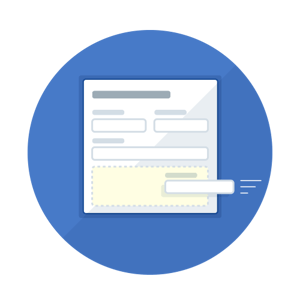
Create user-friendly forms to enhance business process
Forms give endless possibilities for companies to improve and automate business workflows. The data collection from any source, both internal or external, is possible using the forms function.
Forms have endless possibilities; for example, you want to collect vital information that will kick a project or collect essential documents via the upload function inside a form.
Make requests in a structured way by filling out the necessary information in pre-built forms relevant to your business operations. This enables the project/tasks to progress without wasting time trying to collect essential information during the project. Forms save both time and money!
Present forms to users anywhere in a workflow and the data that gets input is stored in the AWM database allowing the possibility to reuse the collected information further in the workflow as stored metadata.
Forms can be the "Satellite Navigation" of your workflow
For the end-user, a form is an effortless data entry and upload point. Each form can be customized to its appropriate audience. Users can even opt to display custom metadata in their project dashboard, which can help identify, search, filter, and report.
The business information entered by any user can automatically guide the workflow direction, just like putting the zip code into a satellite navigation system.
For example;
Forms can also be used for ad-hoc tasks as a way of tasking someone outside of a workflow. For example, you could fill out a basic form called "ad-hoc task" where you populate your name, set a deadline, and type out some instructions before assigning it to another teammate. That simple request will drop into the assigned users' "to-do" list where they can review the task and hit "I'm done" once completed. This will notify the requester that the task has been completed.
Setting up the forms;
A form is a group of metadata fields assembled into a layout with specific display constraints. The rendering of the form is based on multiple dynamic columns and rows grids. All the fields will get distributed according to the available real estate in the browser.
The administrator creating the forms can set the appearance and decide what information is required inside each form. Fields can be made compulsory, and different field types are supported, including; free text, drop-down selections, lookup fields, date fields, booleans, and many more.
The administrator can decide what field values need to be stored as metadata, before recalling that metadata anywhere else in the workflow.
Another significant benefit is the extended functionality of the AWM Trigger and Actions functionality. Specific triggers and actions now have the ability to lookup stored metadata to populate variable fields at run time.
For example, an approval in the workflow triggers an action to send the final proof to the original requestor. Previously you would have needed to set up the requester's email manually. Now the email address can be pulled from the stored metadata automatically simply because the requestor entered the email address at the start of the workflow when they completed the project request form.
Aproove did not just introduce form capabilities. We went much deeper and made huge synergies with our existing trigger and actions, metadata, and project schemas that enable granular control on the form's appearance, permissions, and interaction with our other existing features.
Forms can harvest data that can be extracted and reused anywhere in the workflow, ultimately driving workflow routes, variables, and outcomes. This feature allows simple, user-friendly forms to drive complex workflows that do not need to get exposed to the end-users".